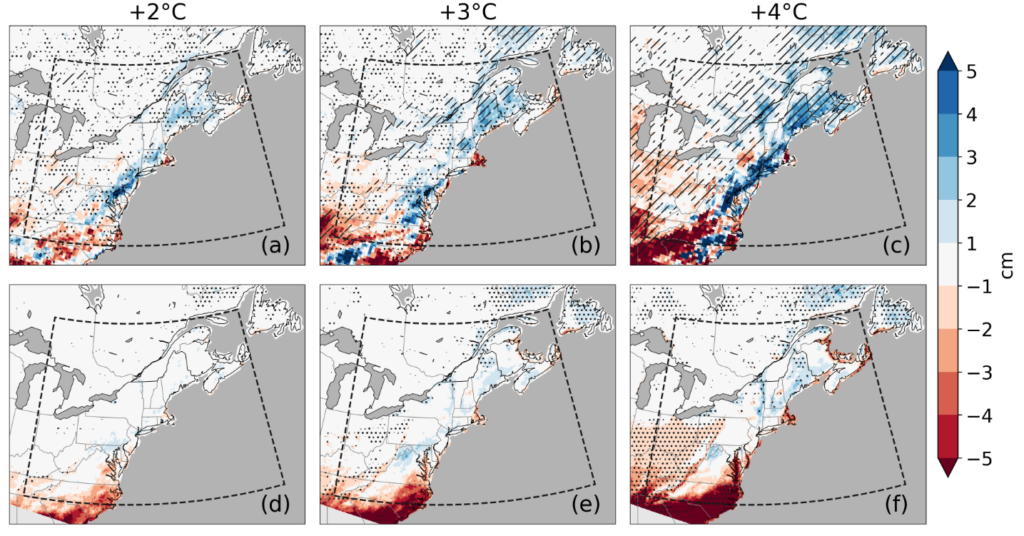AGU Newsroom update
We in the AGU Newsroom are in the process of updating our emailing lists so we can better provide you with the information you need. Change what mailings you receive (i.e., this newsletter, press releases, event information) with this short form.
Featured Video
Drought in Yellowstone could reduce snow and help detect geyser eruptions
Seismometers can detect geyser eruptions, but a new study on Yellowstone National Park’s Steamboat Geyser finds that several centimeters of snow can dampen those seismic signals. However, another study on Steamboat finds that the geyser is sensitive to its climate, going dormant for decades at a time during droughts. A drier Yellowstone might make it easier to detect geyser eruptions, but would there be any eruptions to detect? [Geophysical Research Letters research] [Video] [Geochemistry, Geophysics, Geosystems research] [Press release]
Featured research
Earth’s temperature would be hotter without volcanoes and fires
Stratospheric aerosols from volcanoes and wildfires slow down the rate of global warming, a new study finds. In the past decade, aerosols from volcanoes and wildfires have offset about 26% of the increase in radiative forcing and 20% of the increase in the planet’s surface temperature — but these aerosols won’t be able to cool down Earth for much longer as greenhouse gas concentrations increase. [Geophysical Research Letters research]
Gulf Stream to weaken 29% by end of century
Rising temperatures will cause the Atlantic Ocean’s Gulf Stream to weaken by 29% and the Deep Western Boundary Current (DWBC) to weaken by 47% by the end of the century, a new study finds. Researchers found that the weakening in the DWBC in turn will cause the Gulf Stream to weaken as it compensates for the declining current. [Geophysical Research Letters research]
InSight rover confirms 70s-era predecessors first to detect marsquakes
In 1976, NASA’s Viking mission sent the first successful landers to Mars. One lander detected possible signs of marsquakes, but the Viking team was unable to confirm their origins at the time. More than four decades later, NASA’s InSight rover landed on Mars and retrieved the evidence necessary to close the knowledge gap and confirm the marsquakes. [JGR Planets research]
One cold-season rain event melts Greenland as much as entire summer
A single warm rain during the cold season caused Greenland’s firn layer, a type of ice between snow and glacial ice, to heat up by 6° to 23°C in a day. The findings from this new study demonstrate that minor changes to the region’s precipitation could have major impacts for Greenland’s Ice Sheet. [Geophysical Research Letters research]
China’s forests are getting older, and that’s good news for carbon neutrality
Chinese forest cover area has doubled in the past 40 years, and a recent study finds that in about that time frame the average age of China’s forests has increased from 18.2 to 44 years old. The team determined that China’s forests will likely reach an average age of 71.6 years by 2060, increasing their ability to store carbon and helping the country reach its goal of carbon neutrality. [JGR Biogeosciences research]
A mystery about the Moon’s deep interior endures
Like the Moon pulls tides on Earth, our planet causes deformation on the Moon. Geophysical data recording the deformation suggest that either the Moon has a hot, partially molten layer deep under its surface, or that layer is cool and solid but deforming slowly. We still don’t know the answer. [JGR Planets research] [Eos Editors’ Highlight]
***
Visit the AGU Newsroom to read about the latest science from AGU’s 23 journals, get updates about our organization, register for complimentary press access to AGU journals, and find topical experts. Visit eos.org to read Research Spotlights and Editors’ Highlights. Update your subscription preferences here.
***
AGU (www.agu.org) is a global community supporting more than half a million advocates and professionals in Earth and space sciences. Through broad and inclusive partnerships, AGU aims to advance discovery and solution science that accelerate knowledge and create solutions that are ethical, unbiased and respectful of communities and their values. Our programs include serving as a scholarly publisher, convening virtual and in-person events and providing career support. We live our values in everything we do, such as our net zero energy renovated building in Washington, D.C. and our Ethics and Equity Center, which fosters a diverse and inclusive geoscience community to ensure responsible conduct.

